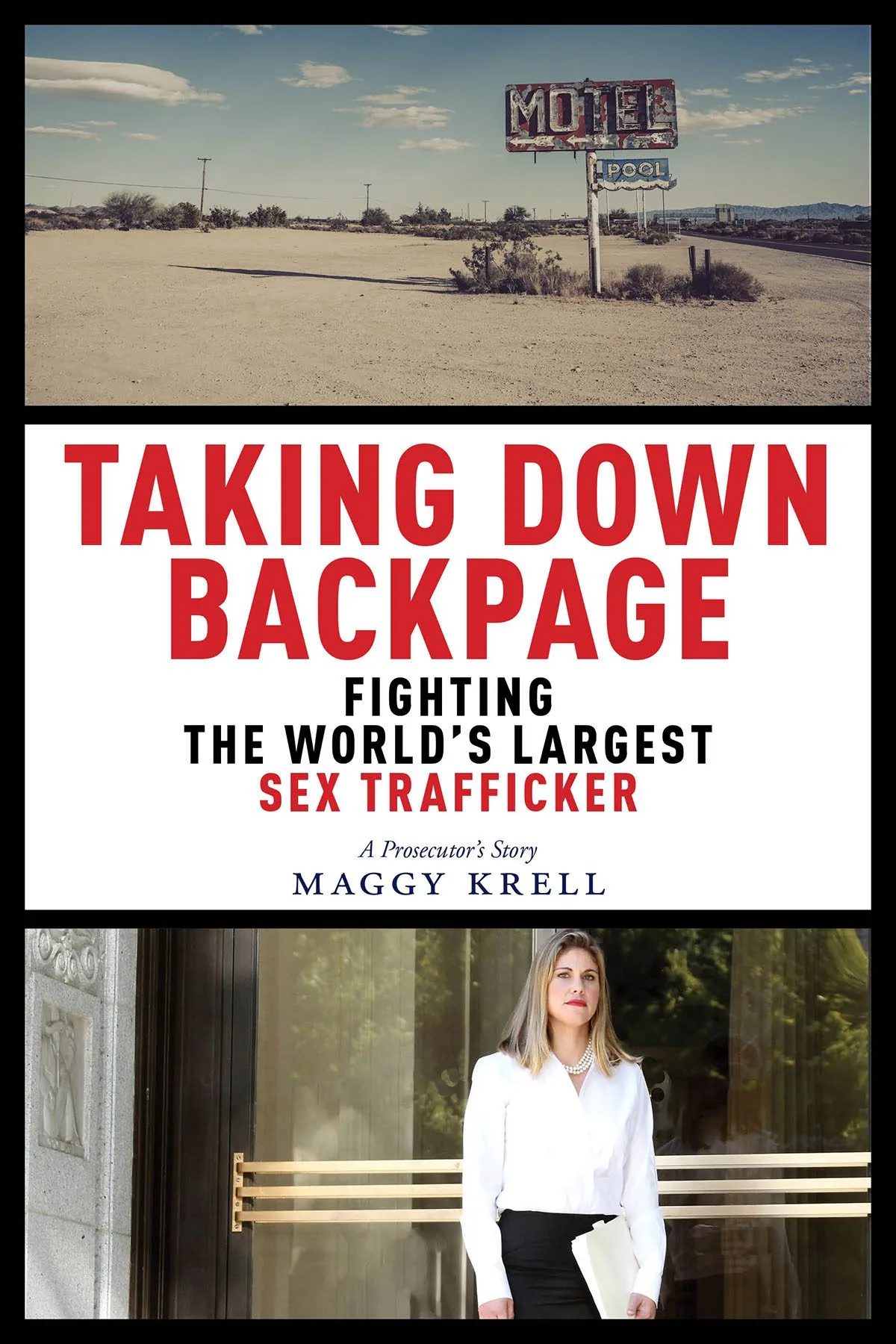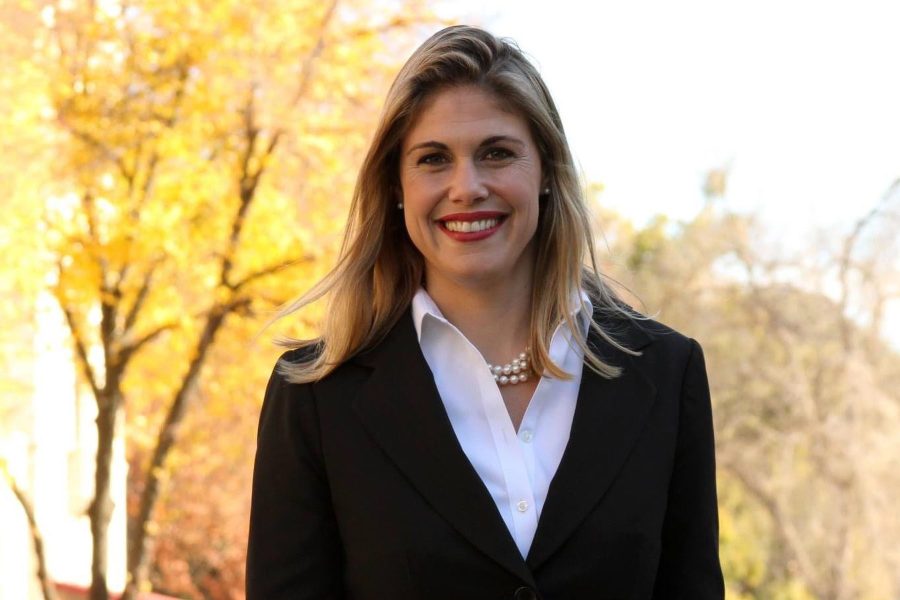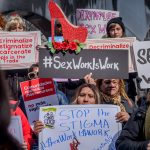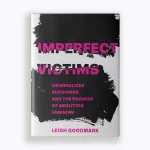Backpage.com was founded in 2004 to compete with Craigslist — and by the early 2010s, classified ads in the “adult services” section generated nearly all of the company’s millions in revenue, according to internal business records. Many of the ads were placed by consenting adults, but, prosecutors said, many were not.
And in 2016, California prosecutors hit Backpage executives with pimping charges, which a judge dismissed citing the 1996 Communications Decency Act — a law protecting free speech on the Internet. The prosecutors quickly refiled, charging executives with money laundering and conspiracy, and the site was shut down in 2018. That team was led by Maggy Krell, a young California prosecutor. With the backing of Kamala Harris, the California attorney general at the time, Krell built a team of prosecutors and law enforcement officials to investigate organized crime, including human trafficking.
“It wasn’t really the sex that was the biggest problem, necessarily,” Krell wrote in her new book, “Taking Down Backpage,” which was published Tuesday, coinciding with the National Day of Human Trafficking Awareness. “It was the exploitation — the lopsided power dynamic we saw time and time again between the men buying sex and the people selling themselves who didn’t keep their earnings, the number of teenagers and children. … I wanted a way to disrupt the entire system, to blow up the whole industry, to show the world what was happening, and most all, to make it stop.”
Backpage.com’s chief executive has pleaded guilty to money laundering and conspiracy charges In a separate legal case, two founders face charges of facilitating prostitution and laundering money; a mistrial was declared in their case in September, and a new trial is scheduled for February.
While many organizations that focus on stopping human trafificking and missing children applauded the shutdown of Backpage, some sex work advocates decried it, saying the loss of the site meant they could no longer safely vet clients.
In the author’s note, Krell emphasized that those who choose to engage in commercial sex work are “just as deserving of law enforcement protection” and should not be stigmatized or ignored. “But that is a different book,” she added.
In a conversation with The 19th, Krell elaborates on how human trafficking in the digital age operates, who the victims are and how law enforcement can help.
This conversation has been edited for clarity and length.
Mariel Padilla: What led you to focusing on sex trafficking prosecutions early in your career?
Maggy Krell: I first became a prosecutor in the early 2000s. I was a deputy district attorney in San Joaquin County, which is south of Sacramento. I was prosecuting a bit of everything: from gang cases and domestic violence cases to different kinds of rural crimes, like illegal cockfighting cases.
I was doing a misdemeanor arraignment calendar, and I remember the first time it included several young women who were being arraigned for prostitution. I’m sure the impetus for that sting operation was probably people in the neighborhood complaining about people loitering on a corner or in a parking lot. And that was the reason. It wasn’t because anyone was particularly concerned about these young women out there. But I was.
I saw them for the first time: young women who looked younger than me in orange jumpsuits in a kind of cell that’s on the edge of the courtroom. And they were just staring blankly and the public defender was being assigned. It was kind of run-of-the-mill, and it felt really alarming to me. It just struck a chord, and I guess that chord still hasn’t gone away.

If you were to describe what sex trafficking looks like today — how it operates and who it impacts — how would you characterize it?
Human trafficking is still a major cause for concern in the United States. It’s been somewhat taken out of the shadows, but I think there’s still a lot we need to do. I think there’s a little bit of sensationalism and not quite accurate information that’s made it harder. The mythology is that this happens in other countries to people from other countries. We see a lot of imagery depicting actual chains, people in cargo ships and stuff like that. But the cases I’ve seen don’t involve any of that. The bonds are made of drug abuse, drug addiction and abusive relationships — chains of trauma. What we’ve seen is it’s most likely to happen to girls and women who are born here and living in poverty.
I would describe it in terms of vulnerability factors. Anyone can be a victim of sex trafficking, but certain people are more susceptible to it because they’ve been marginalized in some other way. We’ve seen that kids in the foster care system and kids who run away from home are more susceptible. We’ve seen a disproportionate amount of girls, women of color and LGBTQ+ youth impacted. Poverty is a major factor as well.
When Backpage first went down in the spring of 2018, there was definitely a plunge in trafficking cases, with some research studies showing fewer advertisements and fewer people looking for advertisements. A kind of pause.
But since then, it’s crept back up and it will be a little bit like whac-a-mole as sites go up and down. Facebook Marketplace has been used, Instagram has been used, and there’s even an active case right now involving two victims who were sexually exploited through Twitter. There’s parts of Craigslist and other websites — though none of which are the same scope as Backpage was.
In your book, you mention when you first started working, sex trafficking wasn’t even defined as a crime in the California penal code. Instead, prostitution was a crime that tended to penalize the victims — disproportionately young women and girls of color. Do you think law enforcement has shifted its approach?
Law enforcement isn’t a monolith and different departments handle this differently. I’ve seen some really innovative work being done to try and create exit strategies for women without criminalizing them. But we also still see major high-profile cases involving child sex trafficking victims whose crimes stem directly from being trafficked — some of whom are still being prosecuted. The fact that they’ve been traumatized and sexually abused isn’t really being taken into account by the criminal justice system.
In the years you spent investigating and later prosecuting Backpage.com, specifically, what was your most challenging or shocking finding?
I was really shocked when I saw the numbers, the volume and amount of money that the website was bringing in. It wasn’t just this kind of rinky dink site; it was a massive operation. The first time I reviewed search warrant records, I saw the millions of dollars that they were raking in each month from these advertisements.
You’ve met with and advocated for many, many survivors and victims. Are there any cases that have stuck with you?
I’ve met with a lot of survivors over the years, and I tried to highlight people in my book that had really poignant stories. But this case was about so many people and I never even met a lot of the people who were trafficked on that site. And they matter just as much. There were some things that I saw over and over: the kind of naivete of the young women and the lopsided power dynamic they had with the traffickers. It’s really easy to see how they were made vulnerable.
Imagine a teenage girl who has all the regular insecurities, and then on top of that she has an unstable home life and maybe a parent who’s incarcerated or another parent who’s addicted and siblings who are already in prostitution or gang life. And she’s just trying to figure out how she’s going to get clothes for the next day or needs a meal or is just looking for someone to care about her. Then she posts something pretty neutral online, and a person who’s on the prowl starts giving her attention. She has all these unmet needs that this new person is now willing to meet, whether it be financially or emotionally or both. Then, a bond is formed and it is suggested she should be making some money.
This is how a lot of these cases begin. The trafficker, massively manipulative, partners with Backpage, or whatever site is popular now, to commercially exploit a girl hundreds if not thousands of times. In some of these cases they were physically abusive as well. I met some girls — who are incredibly brave and resilient — who described being raped and beaten and then advertised on the site again the next day.
Others were murdered.
How do you think COVID-19 has impacted the issue?
Unfortunately, sex trafficking didn’t slow down during the pandemic. What we saw with more people on screens all day was a lot more commercial sexual abuse online. You know, predators meeting kids online, grooming them, asking for nude pictures to be sent and then using that as a form of blackmail.
People were also in more desperate financial situations, which led to an increase in sex trafficking. I did acknowledge in my book that not all sex advertisements or commercial sex necessarily involves trafficking. But my focus and my work has been about the people who don’t want to be there and don’t have a choice.
From your vantage point, are there any viable solutions? What can or should be done to combat sex trafficking?
We have an opportunity to continue making things better with prevention and education. I have seen firsthand successes of survivors who overcame the definite and difficult barriers to really be successful. Starting in schools, we should establish a prevention curriculum that teaches kids about safe and healthy relationships and show them what exploitation is and how to protect themselves. This next generation of kids will hopefully have the tools to stand up for themselves and each other. This education should apply to everyone, especially those in the foster care system, the juvenile and criminal justice system and anyone in a variety of professions that come in contact with survivors, from health care workers to law enforcement officers to teachers. We can intervene early by providing exit strategies and other career opportunities, educational support and mental health care.
When it comes to the criminal justice system, we have to remain vigilant about prosecuting traffickers. And then there’s the investment piece. There’s still a major equity issue throughout the U.S., and we see it in cities and rural areas but there are people in dire straits financially. It’s not necessarily that they want to be selling their bodies, but they feel like that is all they can do. And in some cases, maybe it’s generational but we have to work to make sure people have real opportunities.
I also want to acknowledge the role that survivor leaders have had in the anti-human trafficking movement. I wouldn’t have been able to prosecute cases if survivors didn’t come forward. And in coming up with solutions, the cases where we’ve been most successful have been with the help of survivor advocates who work with other victims and survivors who are just coming out.






